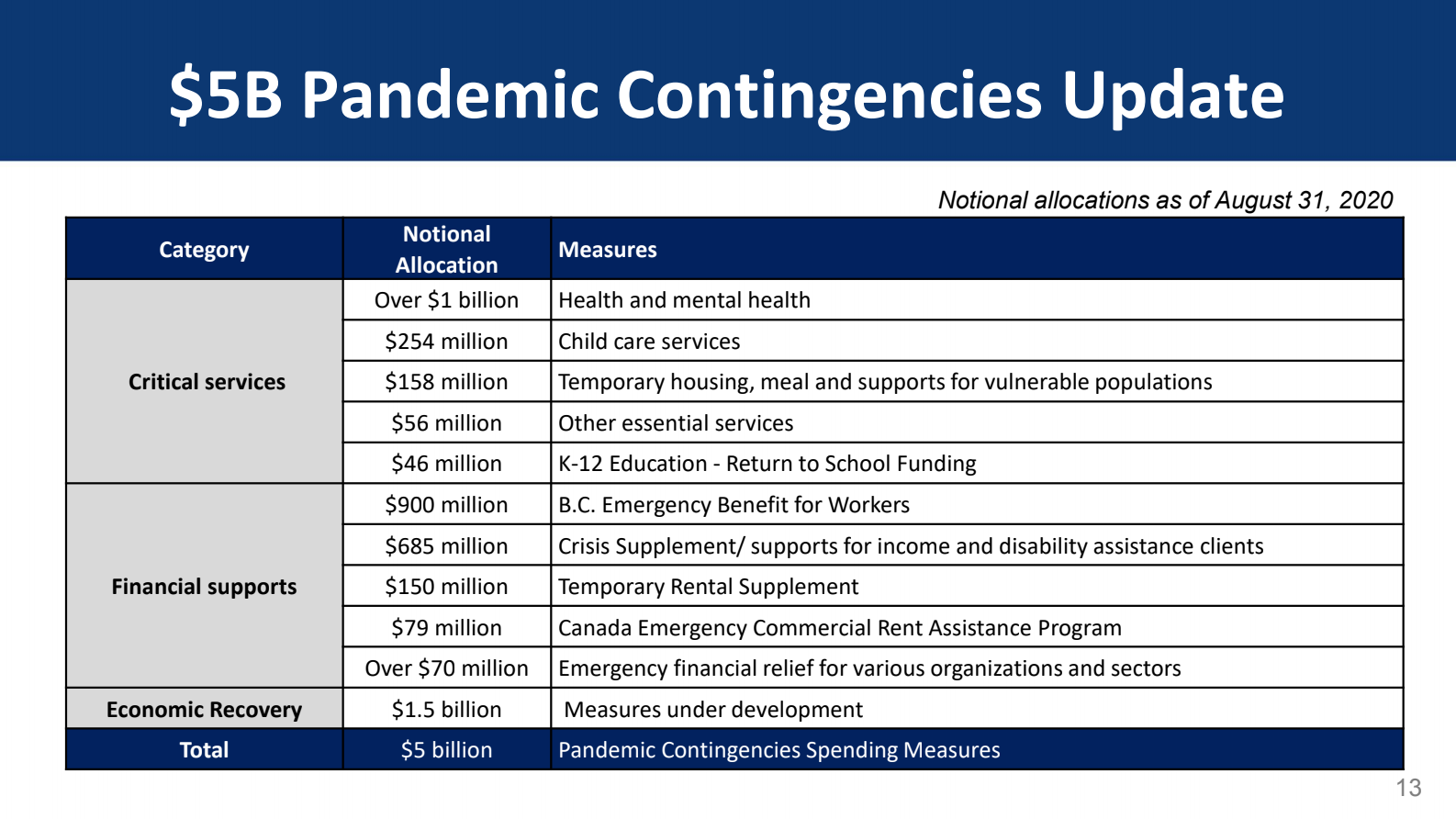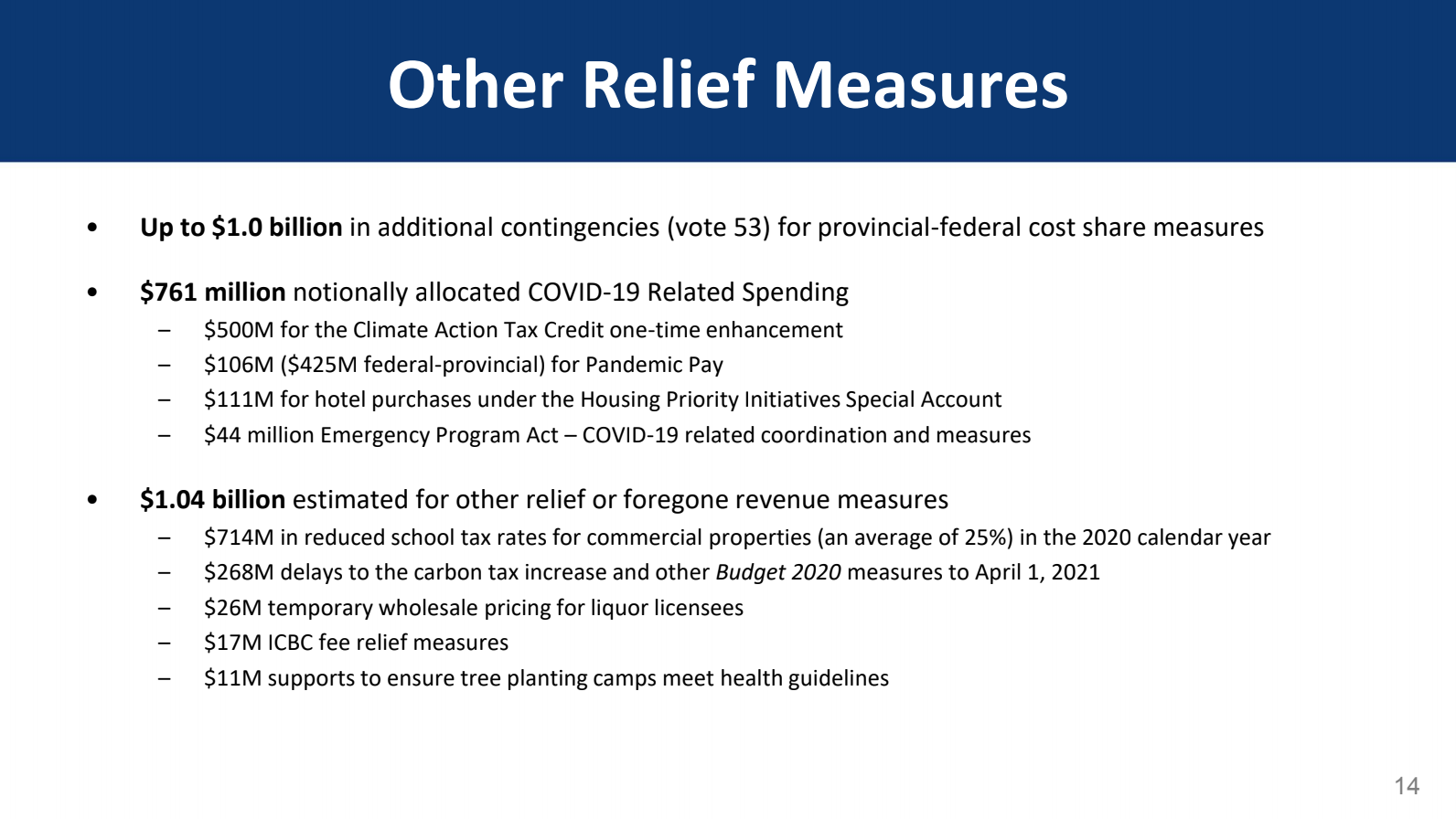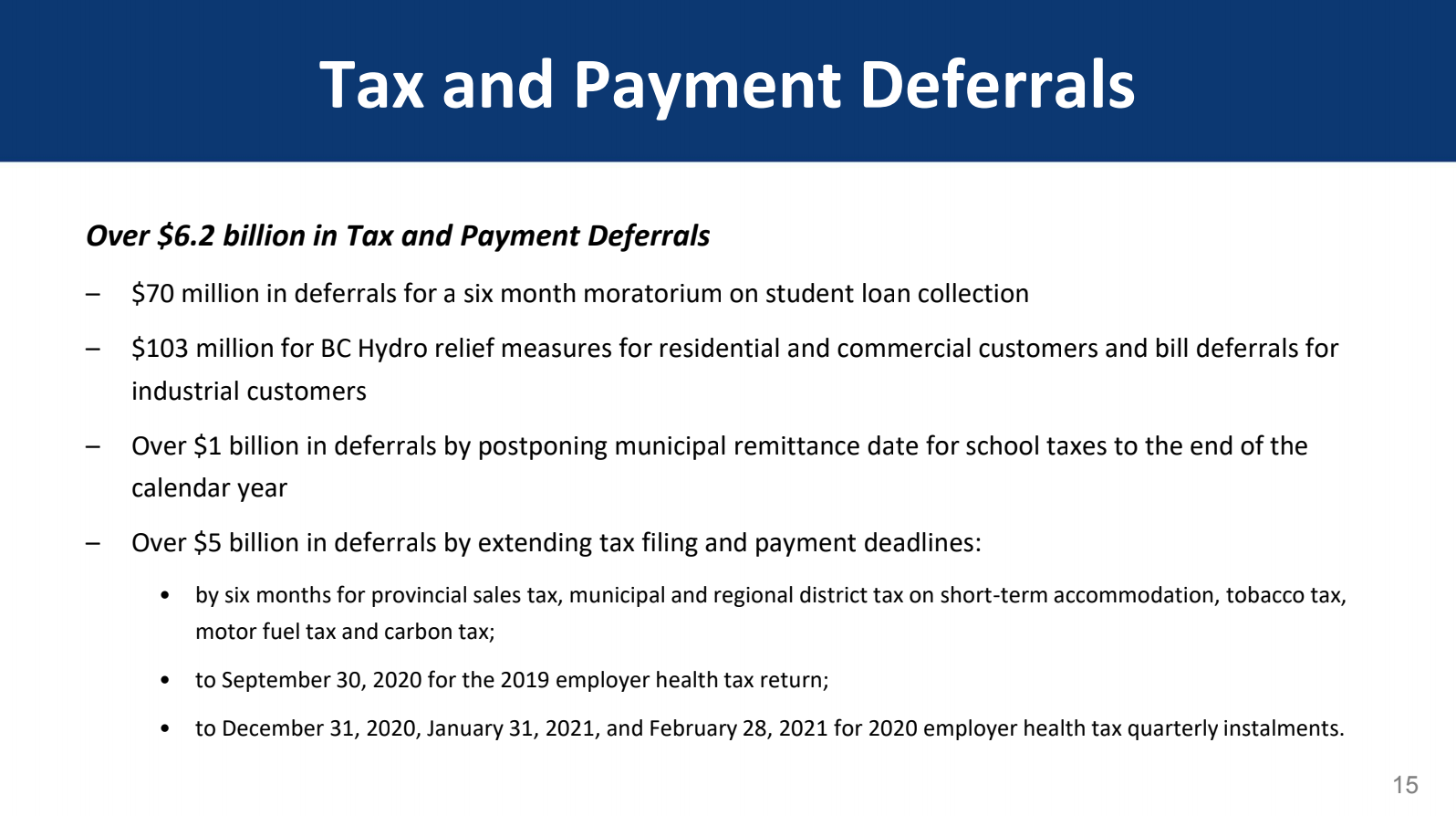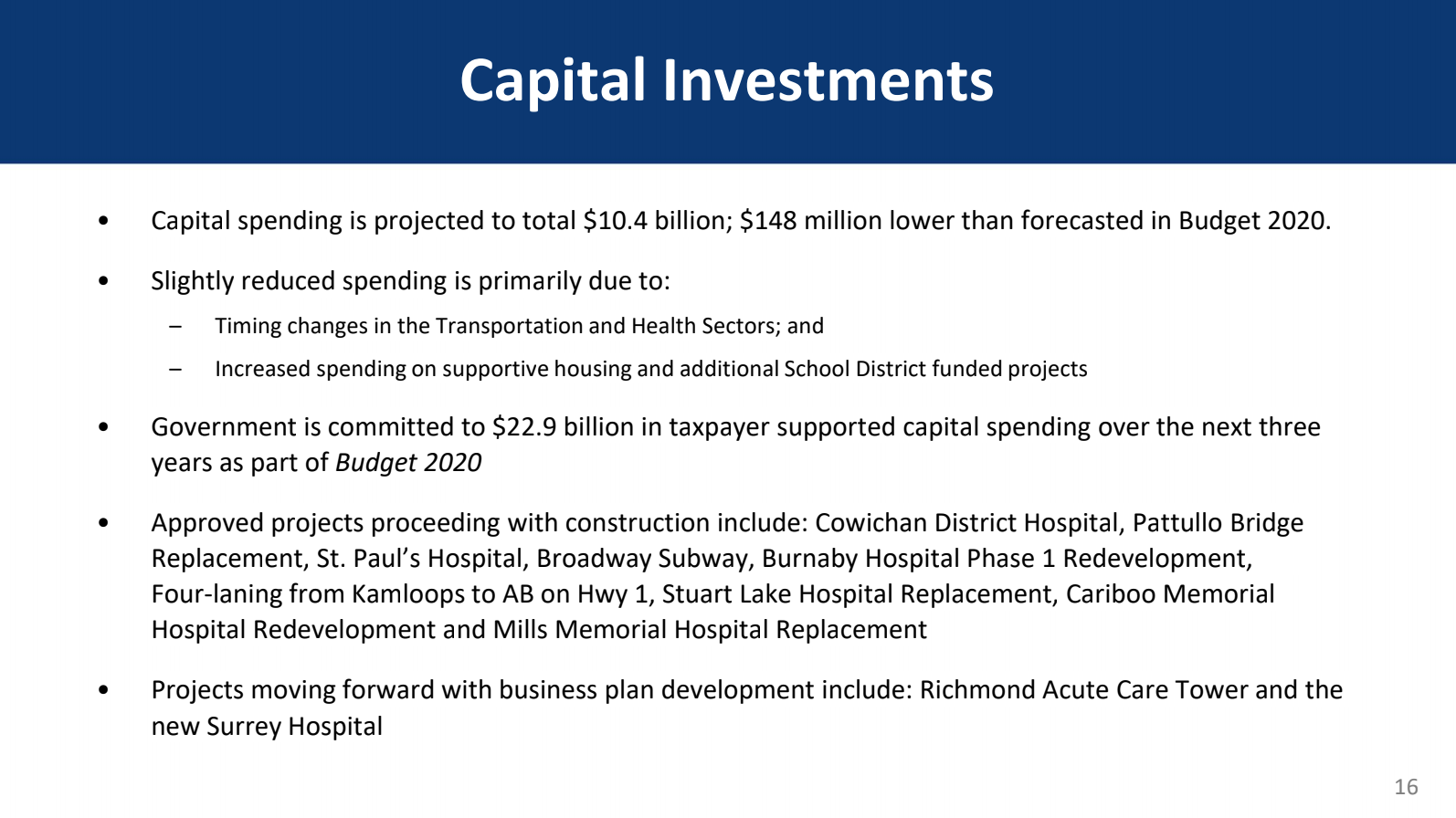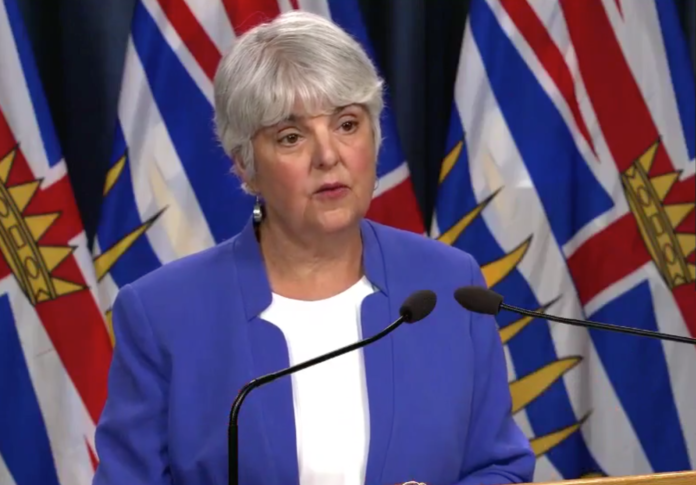British Columbia is forecasting a $12.8 billion budget deficit, after announcing last month that the $200 million budget surplus expected before the pandemic has been wiped out.
In July, the province was projecting a $12.5 billion deficit.
“The pandemic has threatened lives and livelihoods and our government responded with one of the most supportive, comprehensive action plans in the country,” said Finance Minister Carole James.
“Since the Provinces July fiscal and economic scenario, we have seen stronger than expected consumer spending, housing activity and employment gains. These gains are offset by increased prudence to help B.C. weather the long road ahead.”
As a point of comparison, James pointed out that our neighbours in Alberta are projecting over $24 billion deficit, and the global economy could be facing the largest contractions ever on record.
The first quarterly report for the province shows that a dramatic drop in employment and rise in unemployment are starting to recover as of August 2020. As of last month, unemployment rate was 10.7 per cent, compared to 5 per cent in February.
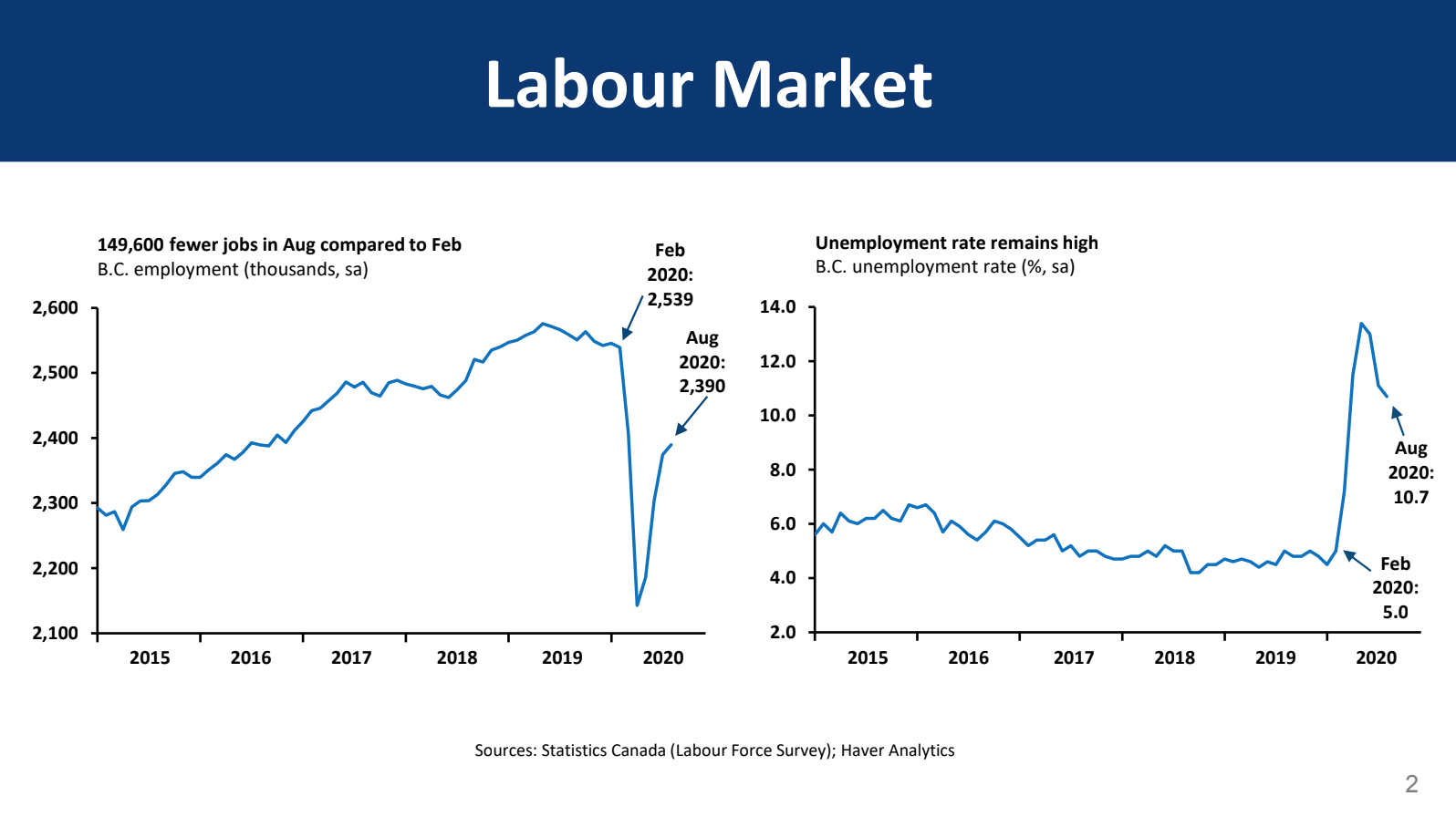
Youth and young adults are heavily represented in the number of people unemployed, as they are overrepresented in the retail and hospitality sector hit hard by the pandemic.
People aged between 15 to 24 saw a decline of 41,000 jobs from February to August, and the unemployment rate for that age group was 22.6 per cent in August, but James says that rate is trending downwards.
Similarly, women are overrepresented in the unemployment statistics as more and more women are forced to take on childcare and family care roles. The unemployment rate for women rose from 4.8 per cent in February to 9.8 per cent in August, but that rate is also trending downwards.
Perhaps most heartening is the consumer spending report compiled from Statistics Canada data, which shows that retail sales have nearly bounced back to pre-pandemic levels, other than for clothing/clothing accessories and gasoline sales.
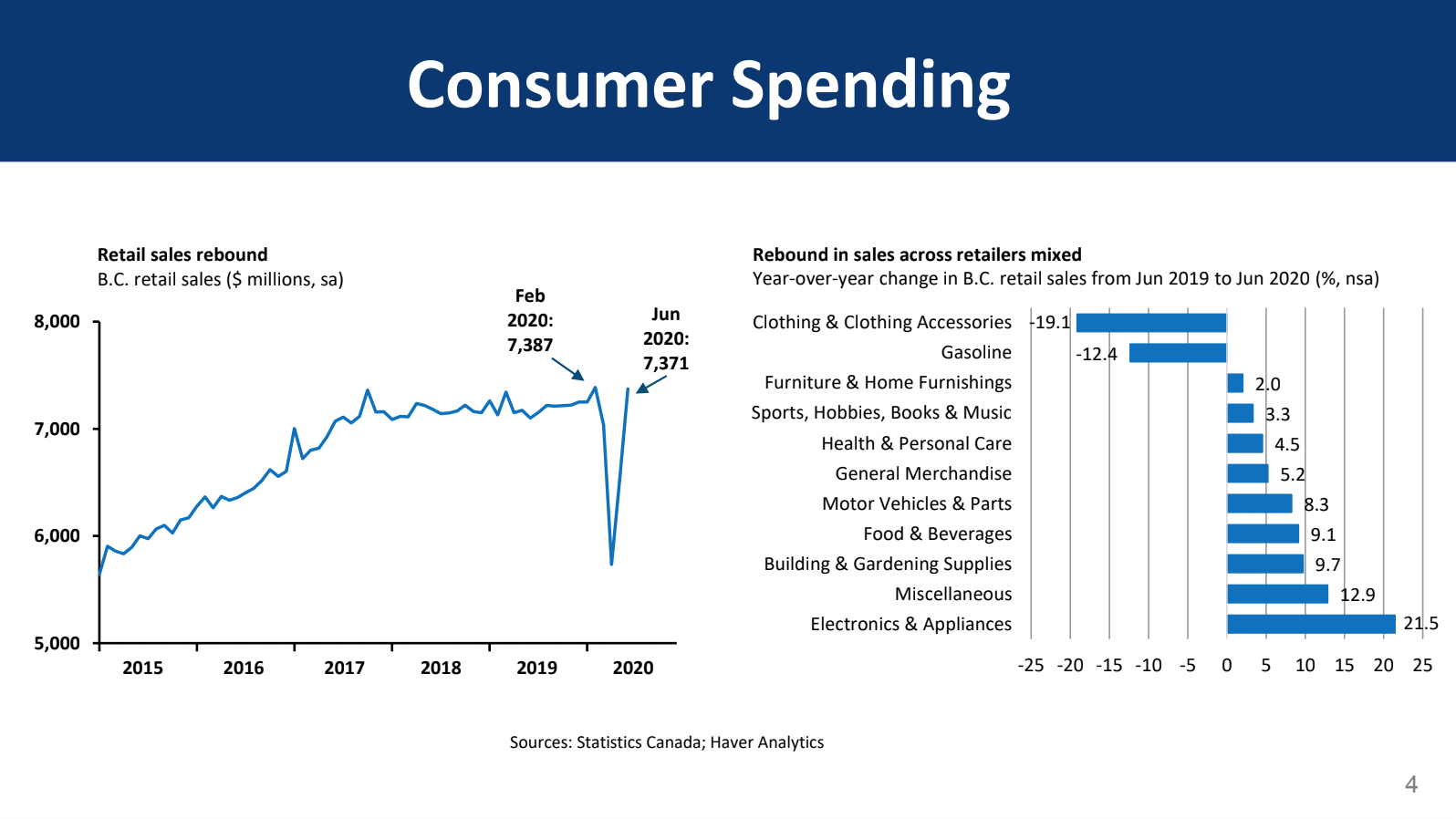
In most sectors, the Ministry forecasts a decline in 2020 followed by growth in 2021. This includes real GDP which is projected to decline by 6.7 per cent before rising by 3 per cent next year.
The $12.8 billion deficit includes a $1 billion forecast allowance as part of a “commitment to prudence” as a result of uncertainty surrounding what further financial measures will be necessary during the COVID-19 pandemic.
The quarterly report included a breakdown of the $5 billion pandemic contingencies including financing for health care supports, return to school funding, emergency benefits, and more.
Minister James and Premier John Horgan are expected to announce how the province is planning to spend the $1.5 billion earmarked for COVID-19 recovery next week.
